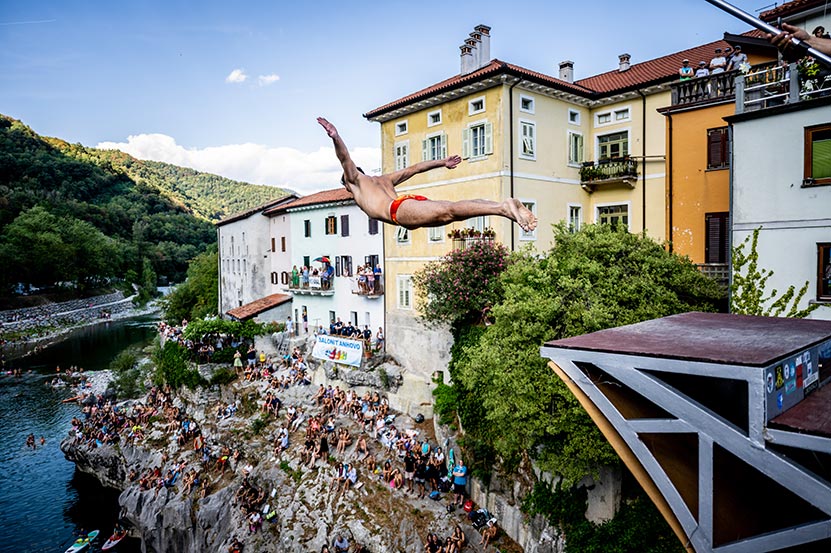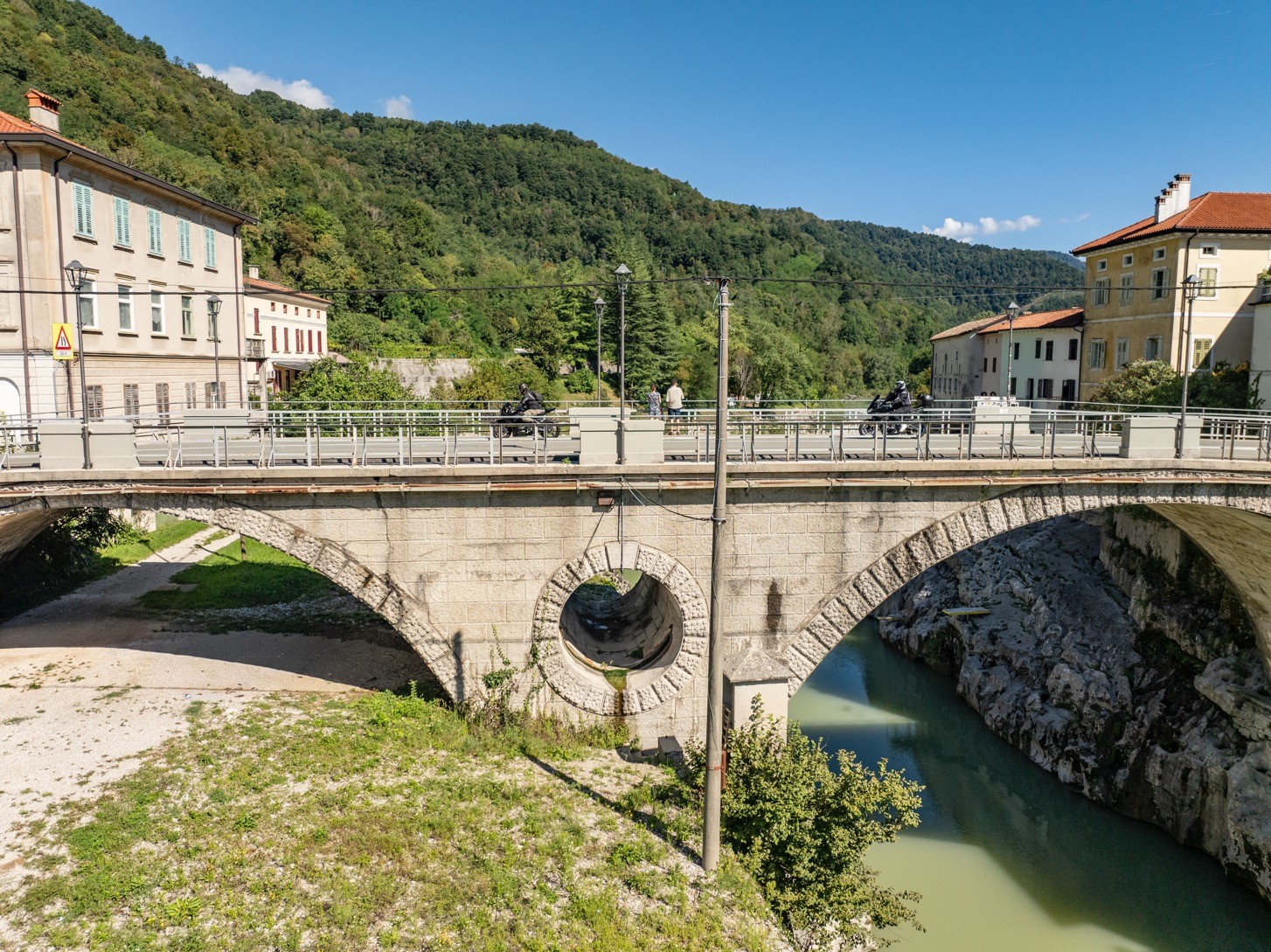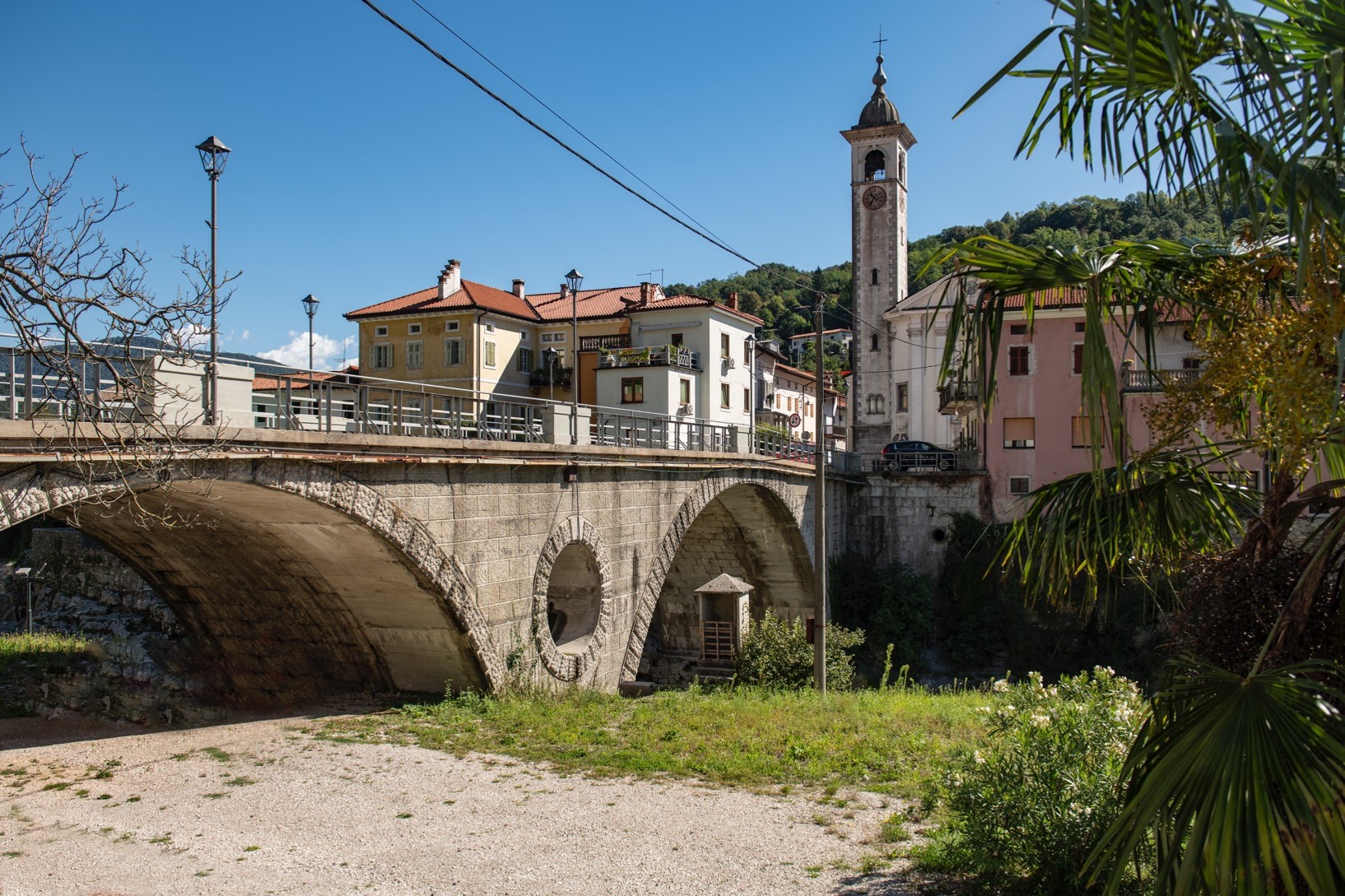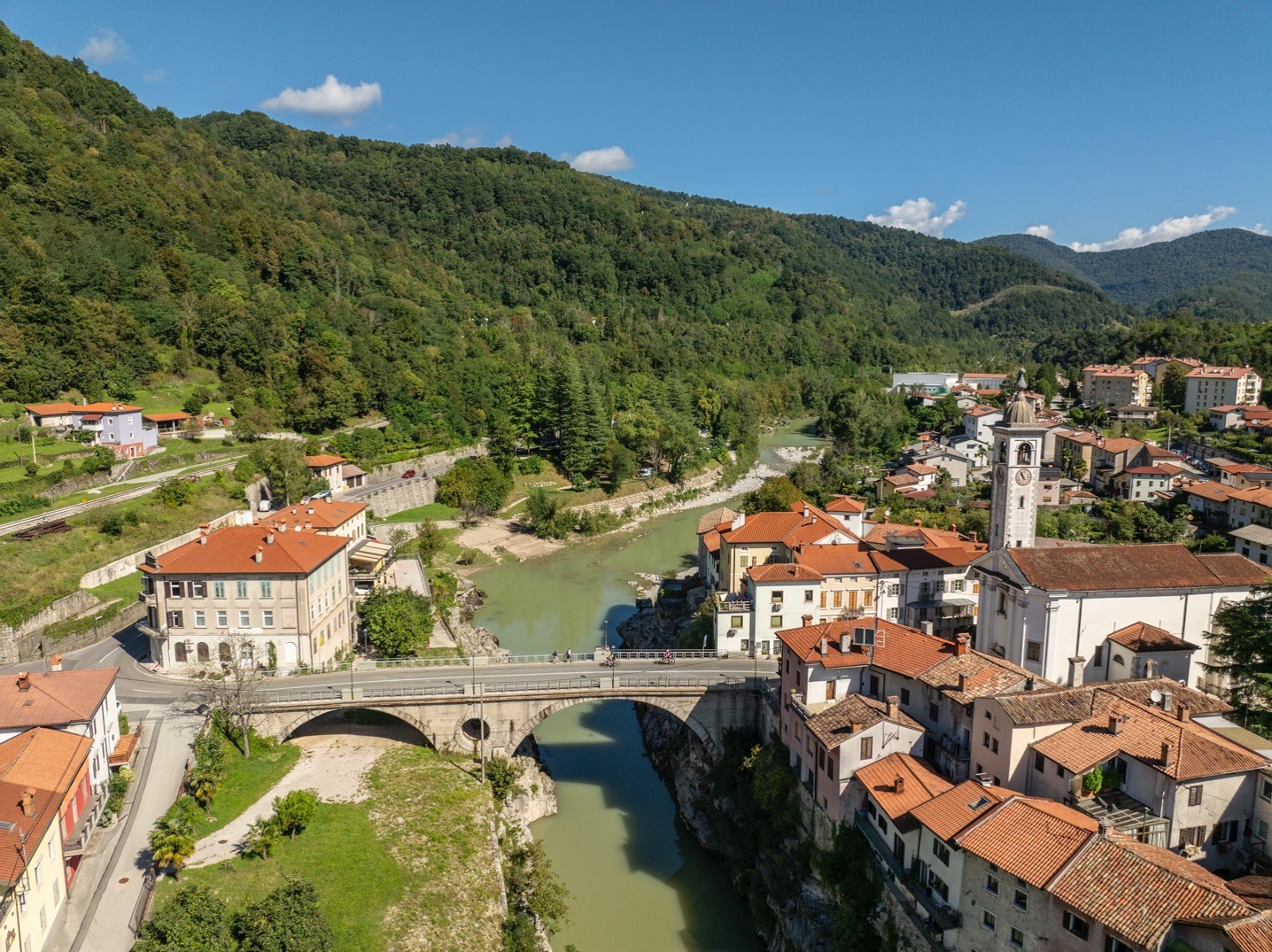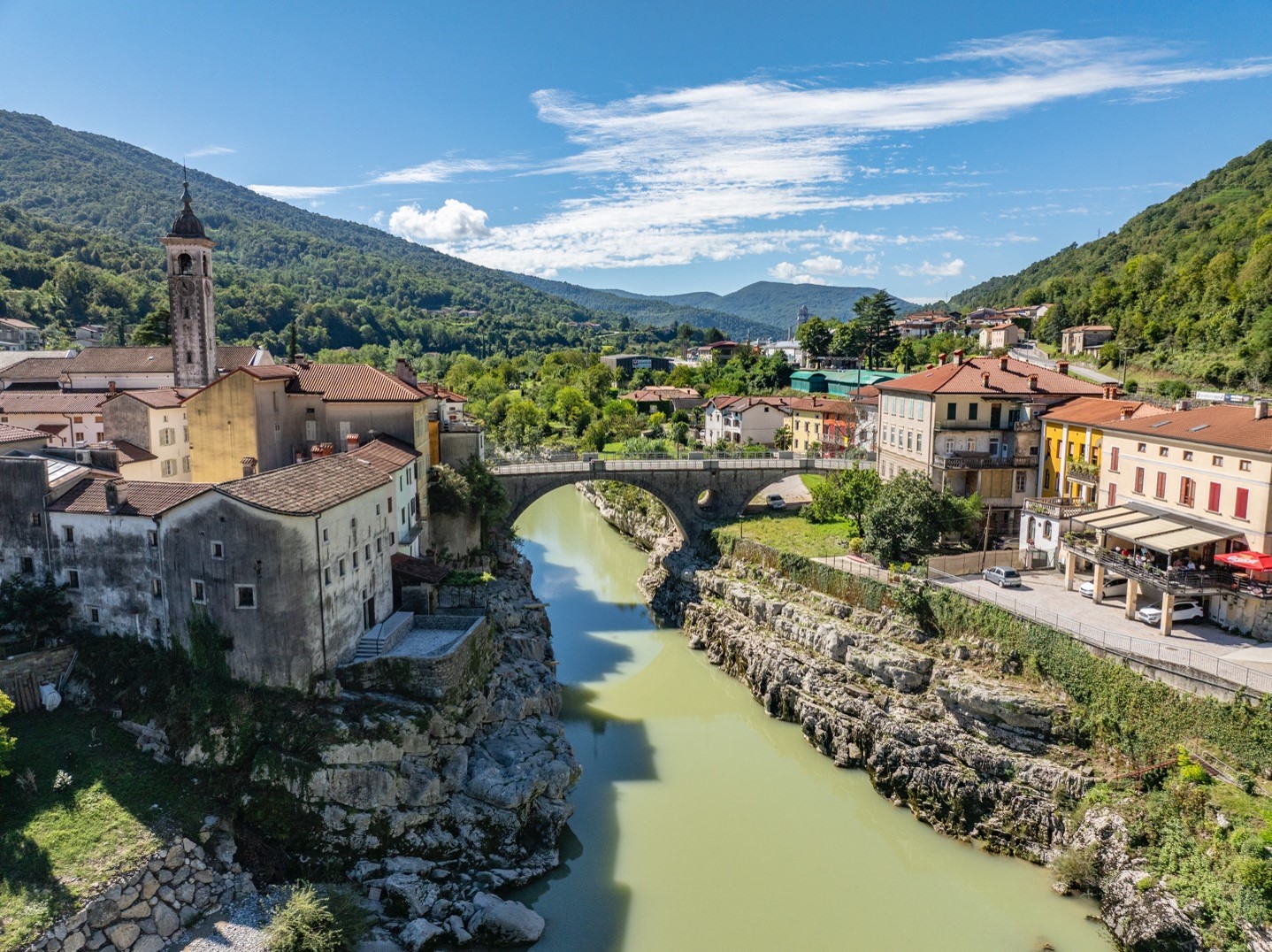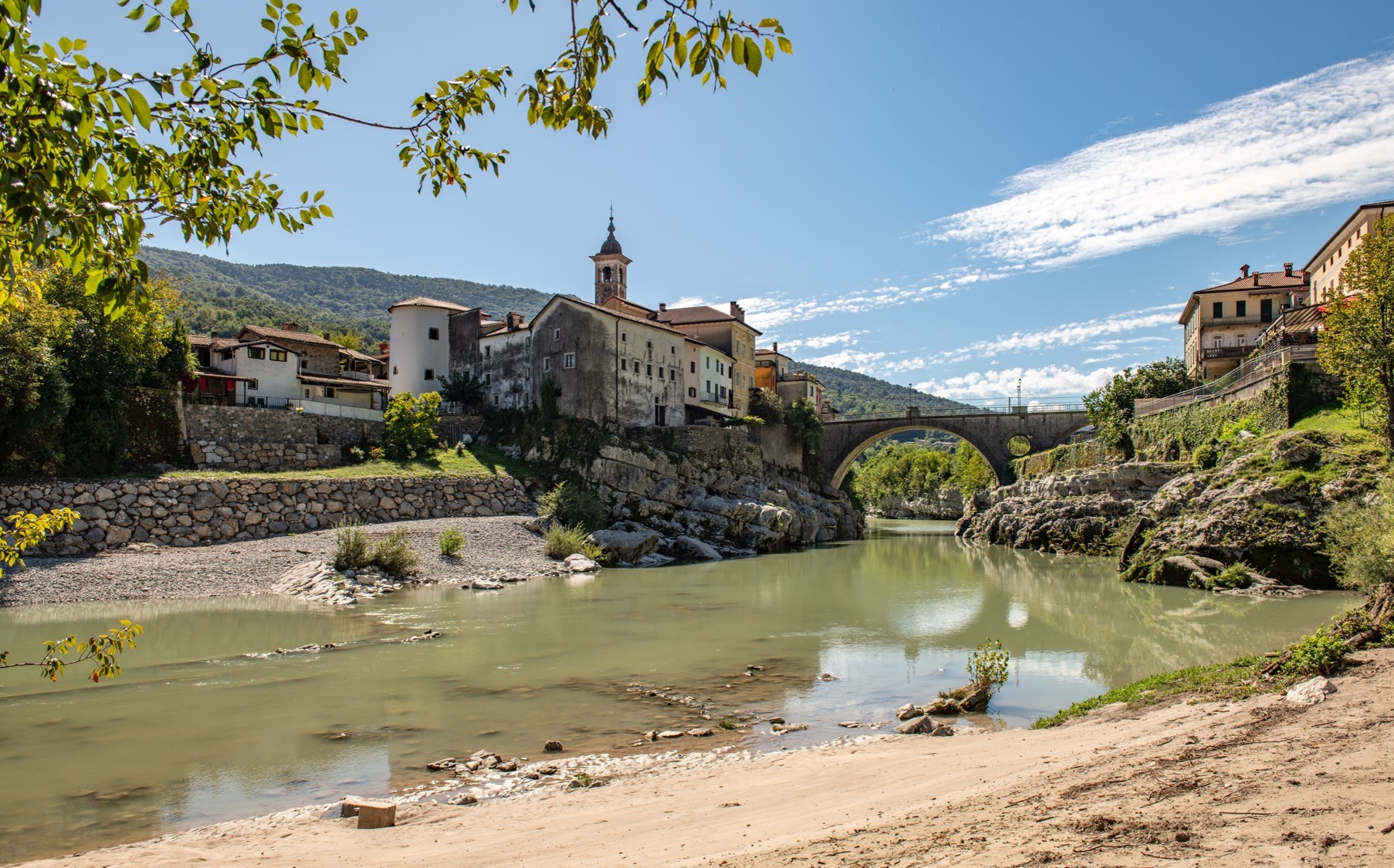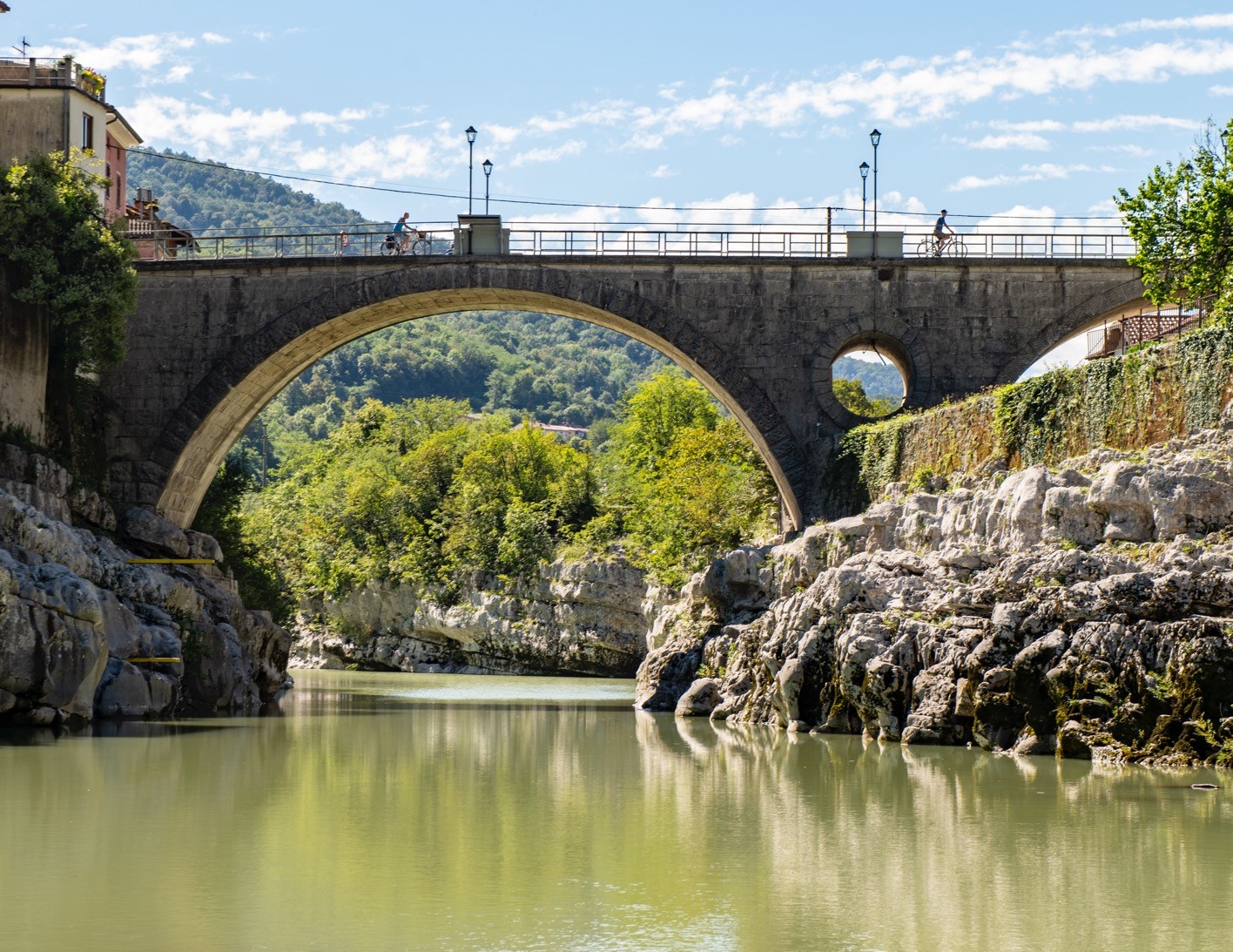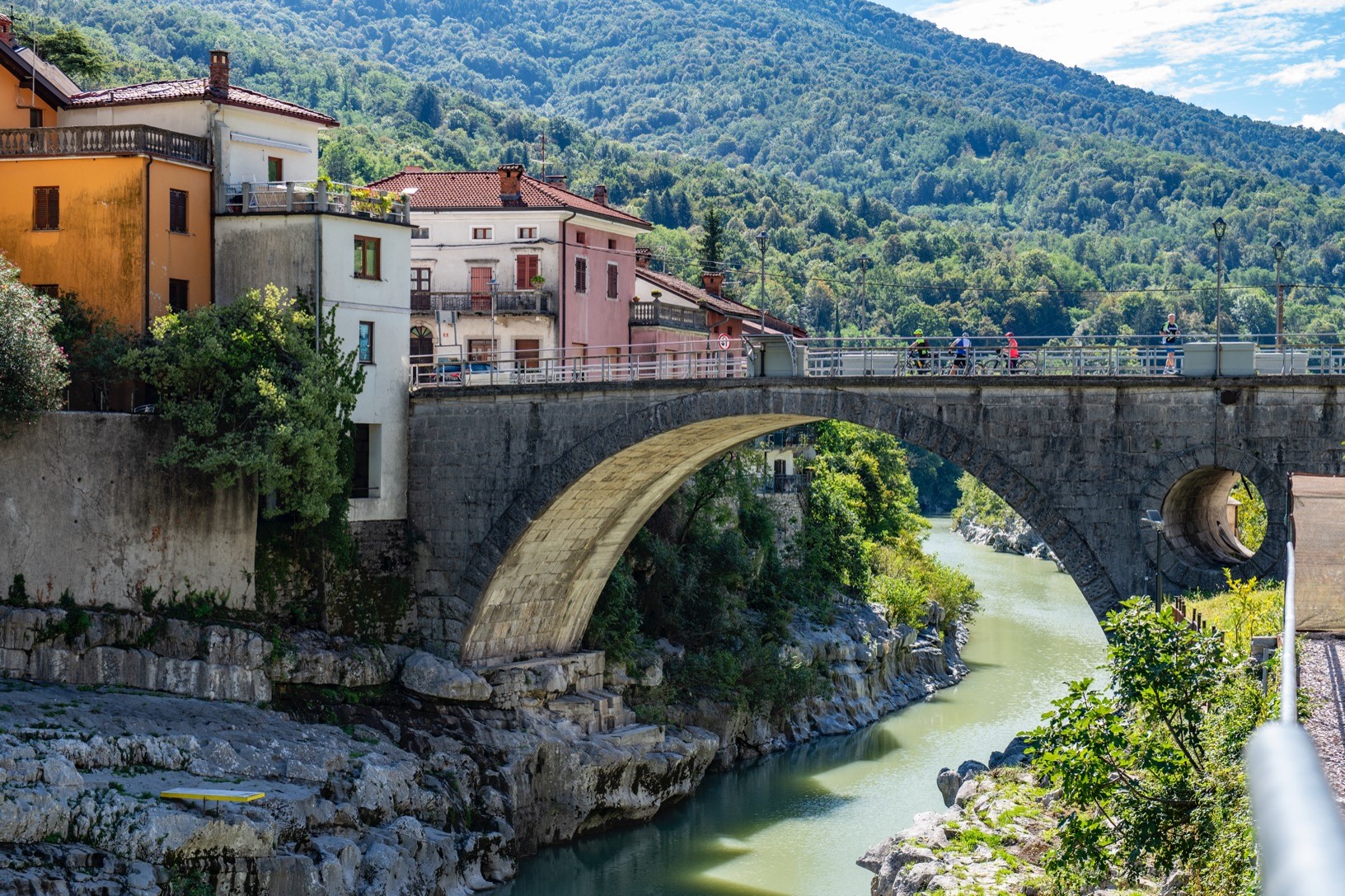Kanal

Kanal Bridge
Gorazd HUMAR
HISTORY
THE BRIDGE IS AN ESSENTIAL PART OF KANAL’S LANDSCAPE
At the point where the Soča-Isonzo riverbed narrows in the centre of Kanal (Canale) stands an elegant double-arch stone bridge, one of the town’s defining landmarks. The remarkable setting creates an unmistakable sense of place. While a bridge is believed to have existed here since Roman times, no documents confirm this. The first historical record mentioning a bridge in Kanal dates to 1361, though it doesn’t specify whether it was wooden or stone. The most detailed description comes from an appendix to the Josephine military maps (1763–1787), which provides these technical details:One of the most beautiful and well-constructed bridges, built with squared stones, spans across the river with a single arch, 2 feet in thickness, a width of 9 feet and extending approximately 50 paces in length.
The strategic and commercial importance of the bridge transformed Kanal into a major centre of the mid-Soča-Isonzo region. In 1813, the French Napoleonic army destroyed the stone bridge while retreating from the Illyrian Provinces. Valentin Stanič, an accomplished mountaineer and forward-thinking parish priest, immediately championed its reconstruction. According to some sources, he personally took measurements and developed the bridge plans. The completed stone structure, spanning 42 metres with a main arch of 24 metres, opened to traffic on 4 January 1817. However, its existence would prove brief—not even lasting a century.
On 23 May 1915—just two days after Italy declared war on the Austro-Hungarian monarchy—Austrian engineering troops blew up the bridge’s arch, sending it crashing into the Soča-Isonzo River. Municipal secretary Anton Bajt provided this vivid account: The bridges over the Soča-Isonzo at Kanal and near Majda (note: the Ajba railway bridge) were demolished. The thunderous explosion left an indelible impression. Fragments from the Kanal bridge shot skyward, scattering across the area and severely damaging surrounding rooftops. The blast was triggered by 100 kg of dynamite.
In August 1917, the Italian army occupied Kanal and constructed a suspended footbridge where the former stone bridge had stood. They also built a floating bridge nearby.
After World War I, Kanal came under the Kingdom of Italy, and authorities immediately began constructing a new stone bridge. During construction (1918–1920), a temporary iron structure was erected slightly to the south, allowing limited traffic to cross the Soča-Isonzo. The bridge has remained unchanged since then emerging unscathed despite numerous Allied air raids on Kanal during World War II. The bridge is 8.5 metres wide and consists of two arches: the main arch spanning the Soča-Isonzo extends 25 metres, while the smaller arch spans 15 metres.
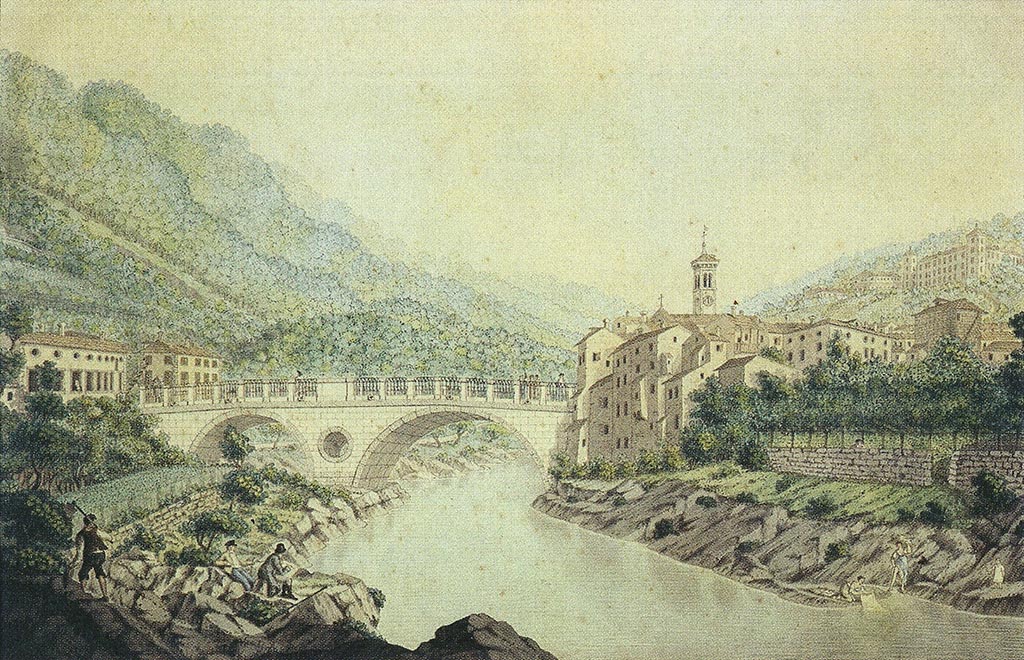
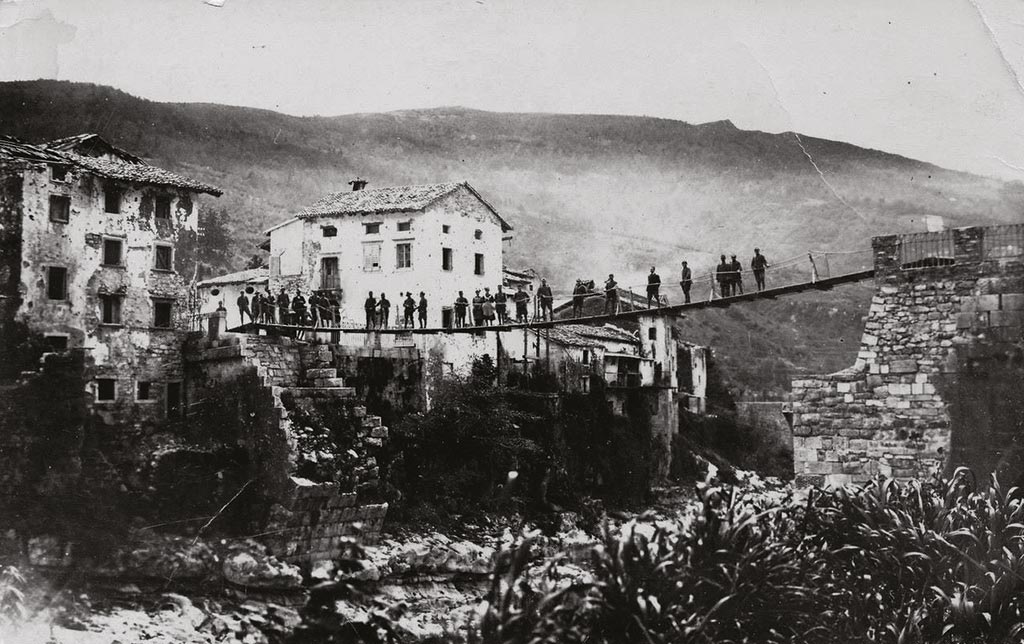

THE BRIDGE IS A MAJOR TOURIST ATTRACTION
In its current form, the bridge stands as Kanal’s most distinctive landmark—a true engineering icon. Its presence is so fundamental to the town’s identity that it appears on every postcard without exception. Each year, it becomes the magnificent setting for the traditional Soča Diving Competition, attracting thousands of enthusiastic spectators to both riverbanks. For these events, a custom-engineered jumping platform turns the bridge into a premier venue, expertly perfectly balancing the thrill of competition with rigorous safety standards.A short walk from the bridge lies a popular bathing beach beloved by locals and guests from the nearby campground. The left bank of the Soča-Isonzo features the distinguished Church of the Assumption of the Virgin Mary of Kanal, situated just before the bridge, where musical performances are regularly held. Adding to the charm of the area, the Riko Debenjak Gallery houses an esteemed collection of artworks and hosts regular exhibitions featuring renowned artists.

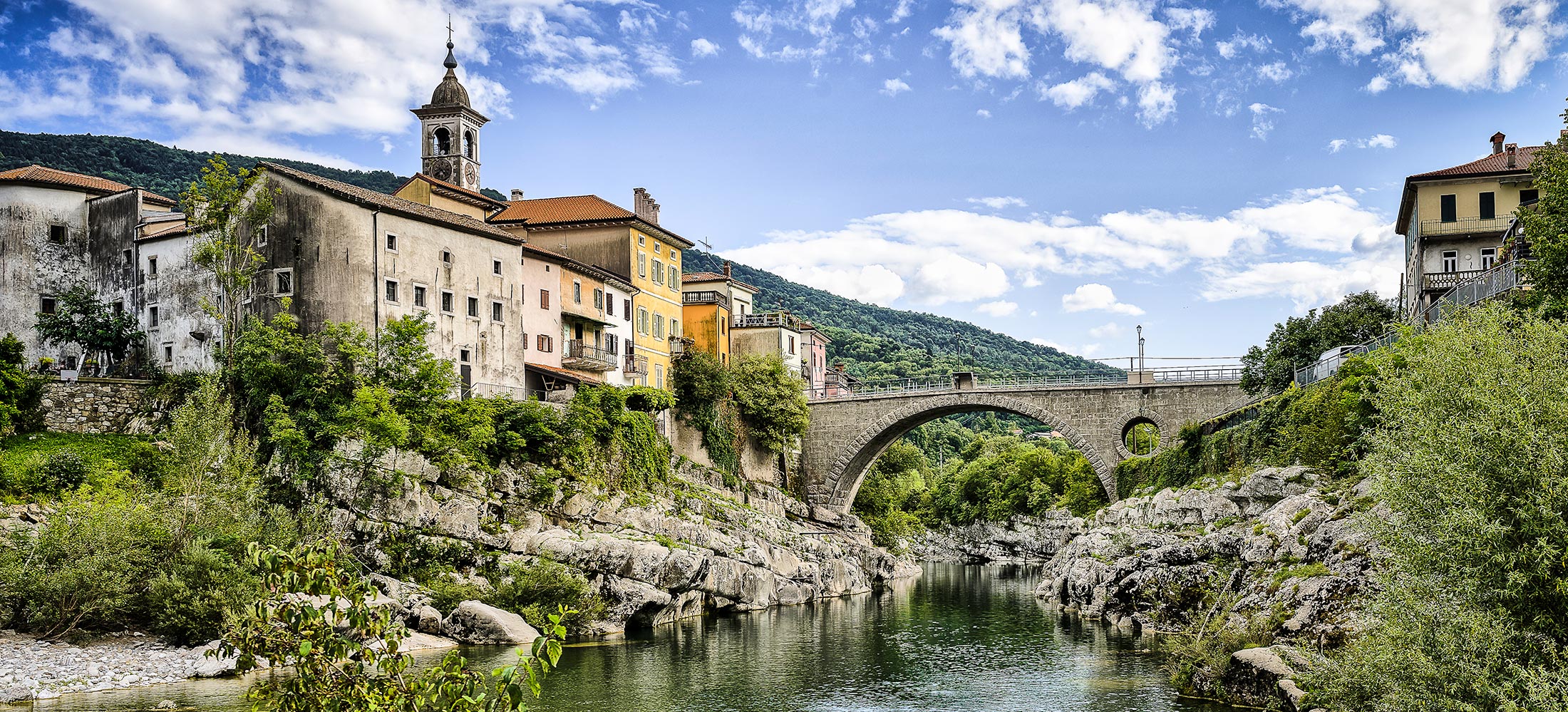
Photo by: Damijan Simčič
